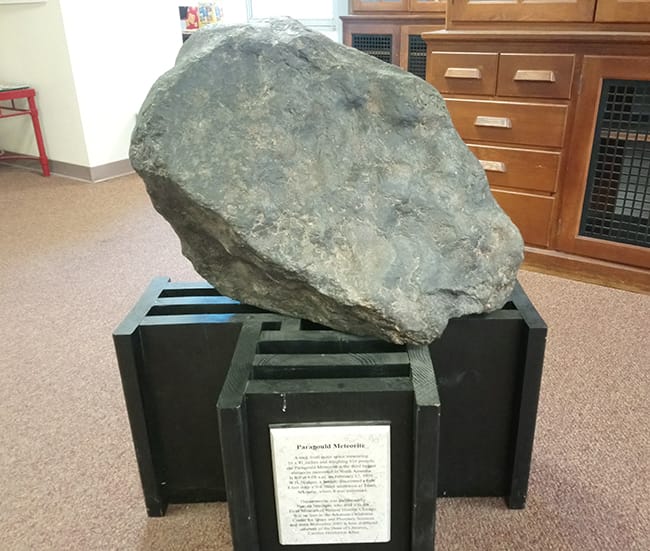

Uh oh...
It appears that you're using a severely outdated version of Safari on Windows. Many features won't work correctly, and functionality can't be guaranteed. Please try viewing this website in Edge, Mozilla, Chrome, or another modern browser. Sorry for any inconvenience this may have caused!
Read More about this safari issue.

In the early morning hours of February 17, 1930, witnesses in Missouri, Illinois, Tennessee, and Arkansas observed a huge ball of fire streaking through the night sky. Some thought they were watching an airplane in flames plummeting to the ground. The bright phenomenon was followed by a massive, sustained roar of sound, which was described in such terms as a blast, an explosion, a big train, thunder, and an earthquake.
As you can imagine, this event startled both people and animals alike, even causing a stampede at a farm near Gainesville, AR, as was noted by one witness. A few hours after this incident, Raymond E. Parkinson, a farmer living near Finch, discovered a hole in his horse field that was surrounded by scattered clods of fresh dirt. After some excavating, Mr. Parkinson discovered an 80-pound piece of what turned out to be the culprit of the early morning anomaly: a meteorite! However, a greater discovery was soon to be made nearby, on a property a few miles south of Paragould.

A month later, a farmer by the name of W. H. Hodges discovered a large hole near his home, which was on the land of his neighbor, Joe H. Fletcher. After having to excavate down about 8 feet, the largest piece of the meteorite, 820-pounds worth, was discovered. This piece, later called the Paragould Meteorite, is the second largest meteorite ever recovered in North America.
According to Dr. Robert Beauford, who studied at the University of Arkansas and has a Ph.D. in Space and Planetary Science, for a mass this size reach the ground, the object would almost certainly have been over 10 meters, or about 33 feet in diameter when it entered the atmosphere.
He goes on to say that most of that mass wound up as gas and fine dust as the meteorite broke up and ablated (melted away) during deceleration in the atmosphere. When it entered the atmosphere, it would have been traveling at 11 to 15 km per second or better, but by the time it reached the ground, it would have been traveling at terminal velocity, the same speed as any ordinary falling object.
If you think of the destructive energy involved when a car decelerates abruptly from a speed as low as 50 or 60 miles per hour, and then consider that this thing decelerated from maybe 30,000 miles per hour to about 200 to 300 miles per hour in less than 6 seconds, it is easy to understand that most of it just wound up as dust and vapor.
The Paragould Meteorite, a Chondrite, likely played a pivotal role in the emergence of the science of meteoritics in America. At about 4.56 billion years old, Chondrites are the oldest objects on Earth. As Dr. Beauford further states, they are pristine bits of billions of years old star stuff, and as such, they offer an unparalleled glimpse into how, when, where, and from what the sun and planets were formed.

The Paragould Meteorite has had several homes over the years, including the Field Museum of Natural History in Chicago, IL. It was on display at the Arkansas Center for Space and Planetary Sciences at the University of Arkansas in Fayetteville from April 2008 until a month ago when it was transported back home.
The meteorite found its way back to the Green County Museum when, about a year ago, the Solar Eclipse Task Force was created by the Paragould Chamber of Commerce. The public started viewing the meteorite on Saturday, May 20, at 10am.
Special thanks to Caitlin Ahrens of UARK Space & Planetary Science and Dr. Robert Beauford who provided expert insight for this article.
We do the work.
You check your email.
Sign up for our weekly e-news.
Get stories sent straight to your inbox!












 Leave a Reply
Leave a Reply
[…] Paragould Meteorite | Fayetteville […]